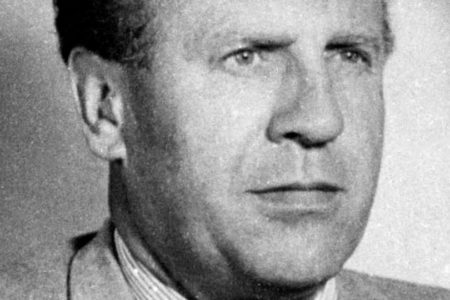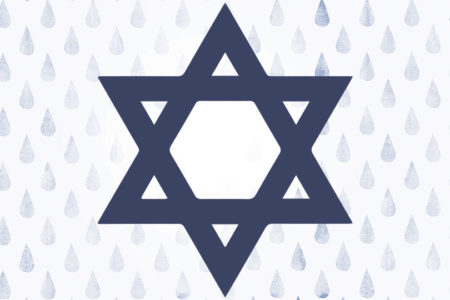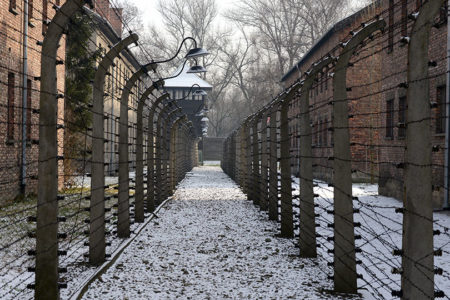The ‘Final Solution’
Never Again
Austria: 50,000, 27 percent; France: 77,230, 22 percent; Germany: 134,500–141,500, 25 percent; Hungary: 550,000–569,000, 68 percent; Netherlands: 100,000, 71 percent; Poland: 2.9 million–3 million, 90 percent; Soviet Union: 1 million–1.1 million, 35 percent.1
These numbers are estimates of the number of Jewish people in these countries who were killed in the Holocaust. When the smoke of World War II cleared, one-third of the world’s Jews— two-thirds of European Jewry—had been killed in what the Nazis described as the “Final Solution,” the last step of a three-pronged program that kicked out, kept in, and killed the Jewish people.
Kicked Out
Hitler had been an anti-Semite long before his rise to power. His intense hatred made it imperative in his mind to define his enemies, so he could kick them out of Germany. He had to be able to answer the question, Who is a Jew? The Nazis had decades’ worth of anti-Semitic “scientific” material to review to answer such a question. Nazi officials and their lawyers wrote the first supplementary decree on November 14, 1935.2 This treatise continued to expand throughout the reign of the Third Reich. Doctors and genealogists spent a great deal of time and energy to determine the individual bloodlines of people from mixed marriages. These mischlings were considered Jewish if they possessed one-sixteenth or more of Jewish blood.3 Said writer David Rausch, “Religious affiliation meant nothing now—a second generation German Christian might be labeled Jewish with a stroke of a pen.”4
Once the definition of Jew was established, the defamation began. Hitler’s rise to power consisted of his persistent message that the Jewish people posed a constant danger to the stability of the Fatherland. Through the use of the SS and his “brownshirts,” Hitler removed qualified Jewish leaders in the fields of education, finance, politics, medicine, and religion and replaced them with Nazis. His message of hate was now duplicated in every major area of German life.
The message was constant and relentless. Jews were accused of being idolaters, murderers, and apostates. They were labeled as liars, deceivers, carriers of disease, demonic, venomous, bitter worms, and vermin. Joseph Goebbels, Hitler’s minister of national enlightenment and propaganda, stated, “The essence of propaganda consists in winning people over to an idea so sincerely, so vitally, that in the end they succumb to it utterly and can never again escape from it.”5
Hitler said, “Tell big lies; tell them in a simple way, say them over and over again as often as you can, until the people begin to believe what you are saying.”6
Defining and defaming Jewish people was ongoing from the time of Hitler’s ascension to power in 1933. The masses believed the lies, resulting in boycotting of Jewish businesses, forcing Jewish doctors out of practice, firing Jewish teachers and government employees, removing Jewish judges from the bench, and refusing Jewish students enrollment in schools. In each case, the Jews were viewed as a danger to the German people.
In 1935 the Nuremberg laws were passed, stripping German Jews of their citizenship, forbidding them to marry German Gentiles or even to fly national colors. Defaming the Jewish people allowed for their physical abuse and the expropriation of their wealth.
Herschel Grynzpan, a 17-year-old German-born Jew of Polish descent, living with relatives in Paris, read reports of Nazi treatment of Jews. Aware of the hardships his family was experiencing back in Germany, Herschel felt helpless. Most distressing was the news that his sister had been forcibly deported to Poland. Taking a gun, Herschel walked into the office of the German ambassador and killed him. As he stood before the magistrate in Paris, he lamented, ”To be Jewish is not a crime. We are not animals. The Jewish people have a right to live.”7
The Nazis responded to the ambassador’s murder by having the SS dress in street clothes to implement a pogrom. That awful night, November 9, 1938, 815 Jewish businesses were destroyed, 191 synagogues burned, 20,000 Jews arrested, and 36 Jews killed. To add insult to injury, the Nazis blamed the Jewish people and forced them to pay for the damages to their own property, denying legitimate insurance payment. The amount came to one billion marks ($400 million). The American consul general in Stuttgart reported, “The Jews of Southwest Germany have suffered vicissitudes during the last three days which would seem unreal to one living in an enlightened country during the twentieth century.”8
Kristallnacht, that infamous night of broken glass, was the last straw for much of German Jewry. Thousands left the country; hundreds committed suicide. From 1933 through 1938, defining, defaming, and disenfranchising Jews in Germany was the rule of the day while Nazis expropriated their wealth. Yet, amazingly, almost half of the German Jews believed it would not get any worse. They were willing to wait it out, in some cases even condemning their fellow Jews who left. That decision proved to bring unspeakable horror for them a short time later.
Kept In
With all the hate and horror present in Germany, the Jewish population was a relatively small 650,000. That number jumped immediately and dramatically when Germany invaded Poland on September 1, 1939, and World War II began. Millions of Jewish people were now under Nazi jurisdiction in places like Poland, Lithuania, Latvia, Estonia, White Russia, and Czechoslovakia. Instead of kicking them out, the Nazis began to build walls around them to pen them in. Those walls went up around small sections of cities in the conquered countries, including Warsaw, Lodz, Odessa, Kiev, Krakow, and Lublin. Thousands were confined in small areas. Thousands more, brought from outside those cities, were placed inside ghettos. Writer Lucy S. Dawidowicz explained: “The ghettos were located in the oldest, most rundown parts of town, sometimes located in outlying areas that lacked the basic facilities of the city proper—paved streets, lighting, adequate sewage, sanitation facilities.”9
As the German armies conquered more territory, more Jewish people were sent to the ghettos. Food became an ever-greater problem. The average daily intake of an adult is about two thousand calories. In the ghetto it was between three hundred and five hundred—if at all. Starvation was commonplace. Jews in the ghettos were so weak their bodies could not fight off diseases; and a plague of spotted fever took hold, causing many additional deaths.10 Conditions were so deplorable that it was a common sight for people to collapse, die, and decay in the streets while the living shuffled by them.
Overseeing the ghettos was a group of twenty-four men called the Judenrat. The Nazis selected these men to do their bidding but gave them no support or help to carry out their wishes. One of their major responsibilities was to select people from the ghettos for deportation. Those Jews were taken by boxcar to concentration camps. There, the Jews who were strongest—usually the men—were immediately put to work. Women were placed separately, many forced into brothels. Others were used as human guinea pigs for diabolical medical experiments. And others would make a journey from which they would never return.
Killed
Ultimately the Nazis took care of what they called the “Jewish problem” with the “Final Solution.” Simply put, the Nazis killed Jews. They killed them in many places, in many ways. One of the earliest ways was to employ mobile killing units called the Einsatzgruppen. This group was a division of the SS, directed by Reinhard Heydrich, chief of security police. Upon entering a city or village, the SS gathered the leaders, who were instructed to bring out the Jewish people, force them to turn over all their valuables, and strip off all their clothes. They then were made to kneel on the ground, and the SS shot them. In many instances, the people first had to dig their own graves before they were killed.
Later more efficient means were used to murder the Jews. Since bullets were too expensive, the Einsatzgruppen deployed gas vans to kill economically. Jews were rounded up into these vans about fifteen at a time. All the occupants expired as the exhaust system was piped into the van. In all, the Einsatzgruppen exterminated nearly 800,000 Eastern European Jews. About 35,000 Jews were murdered in the BabiYar ravine near Kiev.11
Dawidowicz wrote, “On June 21, 1943 [Heinrich] Himmler ordered the liquidation of the ghettos . . . allowing the survival only of Jewish workers in a few labor concentration camps.”12 They were sent to places with names like Auschwitz, Belzec, Chelmono, Majdanek, Sobibor, and Treblinka. Of the 5,370,000 people killed in these places, the vast majority were Jews. The others consisted of anyone who was deemed an enemy to the state, such as Jehovah’s Witnesses and gypsies.
The purpose of these places was to kill—and to do it efficiently. When the Einsatzgruppen started its mass killing, the average cost was ten cents per capita. By using the death camps, the cost dropped to little more than a penny.13 This was accomplished through the use of a gas called zyklon B, a crystalline cyanide pesticide. The procedure was simple, surreal, and shocking. Victims from various ghettos were packed into cattle cars and transported for hours. Many died en route. Immediately on arrival, the men were separated from the women and children. Their hair was shorn off; their clothing, taken from them. They were paraded through columns of police to what they were told were showers. “The gassing lasted ten to thirty minutes depending on the . . . techniques used.”14
Dawidowicz: “On March 16, 1946, Rudolf Hoss [not Hess] made the following statement to two officers of the War Crimes Investigation Unit of the British Army of the Rhine: ‘I personally arranged on orders received from Himmler in May 1941 the gassing of two million persons between June–July 1941 and the end of 1943 during which time I was commandant of Aushchwitz.”15
What happened to the Jewish people must be remembered. (See “A Day for Remembering” on page 30.) Their suffering was immeasurable. But we know a yet-future holocaust awaits the Jewish people, far worse than that of Nazi Germany. It will be a time unlike any in the history of humanity. Zechariah 13:8 explains that two-thirds of the Jewish people will be killed during the Tribulation. In many respects, this event is a continuation of Hitler’s “Final Solution.”
Unlike the Holocaust of World War II, however, the Tribulation can be avoided through faith in Jesus Christ as Messiah and Savior from sin. We who know Jesus the Messiah have the imperative to warn others, both Jews and Gentiles, about this prophetic truth and explain the way of escape. We can have a part in preventing lives from becoming death statistics like those that mark Hitler’s Holocaust.
ENDNOTES
- Encyclopedia of the Holocaust, cited on YadVashem’s Web site [www.yadvashem.org/about_holocaust/faqs/answers/faq_4.html].
- Lucy S. Dawidowicz, The War Against the Jews 1933–1945, Holt, Rinehart and Winston, New York, 1975, p. 76.
- Unpublished notes from Holocaust class taught by Byron Sherwin, College of Judaica, Chicago, 1981–82.
- David A. Rausch, A Legacy of Hatred, Moody Press, Chicago, 1984, p. 77.
- Ibid., p. 87.
- Unpublished notes.
- Rausch, pp. 83-84.
- Ibid., p. 84.
- Dawidowicz, p. 280.
- Seymour Rossel, The Holocaust: The World and the Jews 1933–1945, Behrman House, Inc., New Jersey, 1992, p. 34.
- Ibid., p. 44.
- Dawidowicz, p. 188.
- Unpublished notes.
- Dawidowicz, p. 199.
- Ibid., p. 200.







